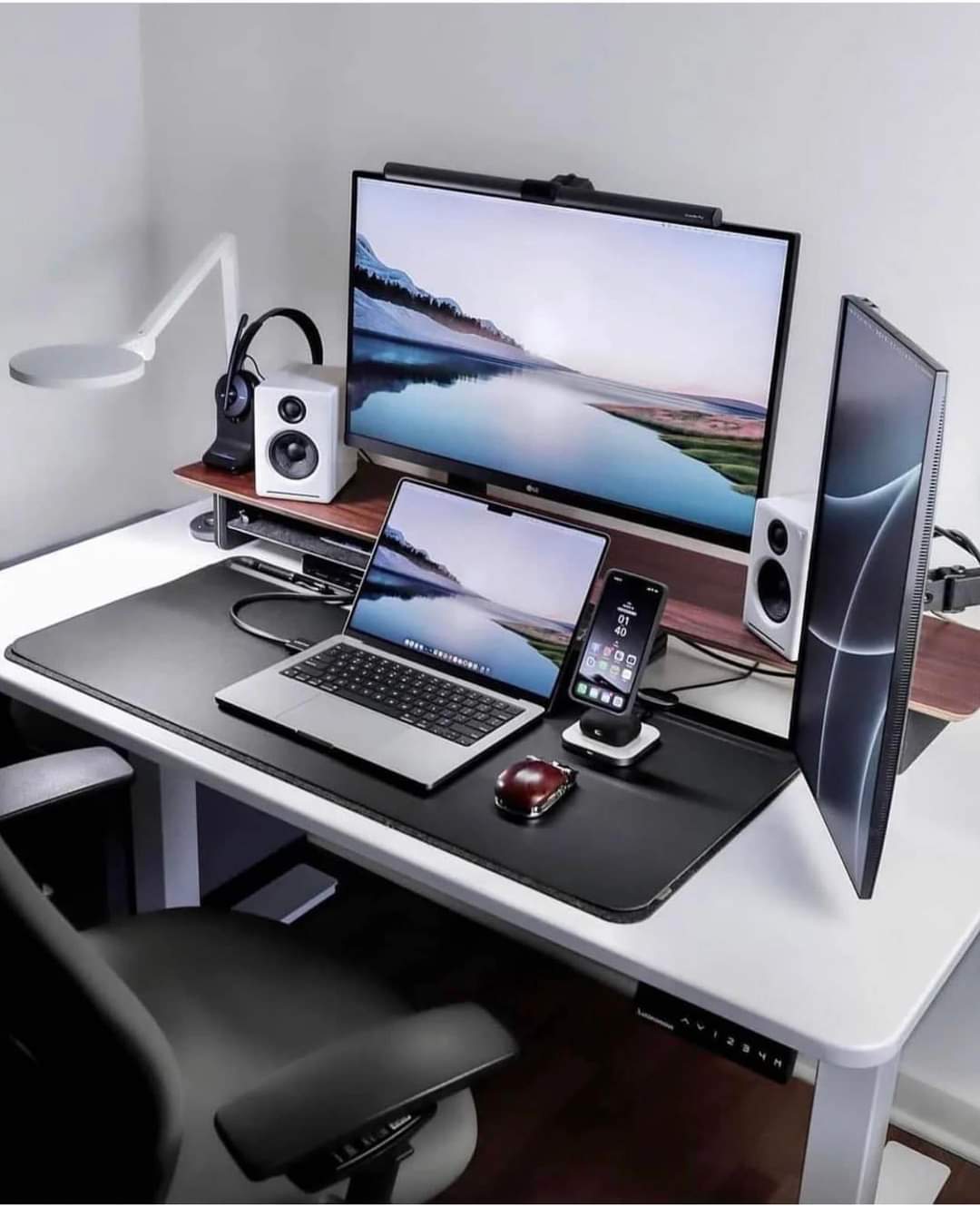Who Is a Web Designer? And Tips to Improve Website’s User Experience (UX)

Who Is a Web Designer? And Tips to Improve Website’s User Experience (UX)
In this article, titled; Who Is a Web Designer? And Tips to Improve Website’s User Experience (UX), we shall discuss Who Is A Web Designer first, before moving on to other topics.
Who Is A Web Designer?
A web designer is responsible for designing the layout, visual elements, and usability of a website. Their goal is to create something that is not only visually appealing but also streamlined and easy to use.
There are many types of web designers, including information architects (who establish a site’s structure and hierarchy for SEO), visual designers (who make sure a site is aesthetically pleasing), and user experience designers (who ensure that the site’s design supports the user’s experience).
Example of a Web Designer Job Description
It will cover a sample job description, exploring the daily responsibilities and necessary qualifications of a web designer.

The Job Overview
You will be involved in the development of our website, from the earliest conception to final release. As our web designer, you will work with the front-end developer to create intuitive, attractive user interfaces to engage customers. Your duties will include taking requirements, creating mock-ups, and designing layouts while balancing the usability, visual appeal, and technical feasibility of the designs. You will also have the opportunity to plan and execute projects, as well as improve the overall quality of the website.
Responsibilities
Below are some of the responsibilities a web designer is expected to assume:
– Create wireframes or mockups for web pages and applications
– Design layouts for mobile, tablet, and desktop devices
– Create branding and identity systems for websites, apps, and other media
– Design graphics, icons, and logos
– Design custom WordPress themes
– Work with developers to implement visual elements of websites
– Research and evaluate new design trends
– Establish and maintain design standards and best practices
Job Qualifications and Skill Sets
Below are the qualifications expected of a web designer:
– Proficiency with HTML, CSS, and JavaScript
– Bachelor’s degree in design or a related field
– Experience as a graphic designer or in a related field
– Demonstrable graphic design skills with a strong portfolio
– Proficiency with required desktop publishing tools, including Photoshop, InDesign, QuarkXPress, and Illustrator
– A strong eye for visual design and composition
– Effective time management skills and the ability to meet deadlines
– Understanding of marketing, production, website design, corporate identity, product packaging, advertisements, and multimedia design
– Experience with computer-aided design
Who Is a Web Designer? And Tips to Improve Website’s User Experience (UX)
5 Web Design Tips to Improve Your Website’s User Experience (UX)
1. Remove the Clutter
First of all, you may want to make sure that your website is not cluttered. Therefore, what you need to do is review your designs to make sure they have a lot of the essential elements. If you think that some of the elements don’t improve the overall user experience, you may want to get rid of them.
There should not be too many pull-out menus. There are fold-outs and drop-downs. They can be used to reduce clutter. If you can, make sure that each menu does not contain more than 7 items.
2. Use Enough White Space
After you have cleared out all of the clutter, you will have plenty of space to fill in. If used the right way, negative space or whitespace can help improve legibility and the main subject. Therefore, what you need to do is have some negative space around your most important items.
However, you may not want to reduce the charm of the layouts with more visuals. Moreover, you can add some typography and color to make things exciting.
3. Use Visual Hierarchy
Visual hierarchy refers to different types of visual elements, such as placement and size. For example, you can place a big and bold title on top of the page. On the other hand, you should use a small font to present legal information at the bottom of the page.
You may want to design your webpage in a way that is easy to scan for your visitors. We know that most users scan web pages instead of reading every single word. Therefore, you may want to check out multiple alternatives.
4. Choose the Best Colors
As far as good composition is concerned, you need to consider a lot of specifics, such as color. In other words, you need to create a color hierarchy. For example, you may want to use the same color for the primary elements, secondary elements, and the least important elements.
Apart from this, you may want to keep the themes consistent. After you have decided on a color palette, you should stick with it. Make sure that the primary secondary and the least important colors are consistent across your website.
5. Use High-Quality Photos
Finally, if you want to upload real-life photographs on your web pages, you should do it right. Make sure that the photographs are effective and meaningful, as they can help you achieve your business goals. There should upload quality photos on your website.
If possible, you should use photos of real people. This is important to engage the visitors of your website. Similarly, you may want to set the right atmosphere.
Before I round up, let’s quickly look at What Is Web Design?
What Is Web Design?
Web Design is the process of collecting ideas, and aesthetically arranging and implementing them, guided by certain principles for a specific purpose.
Web designing encompasses many different skills and disciplines in the production and maintenance of websites. The different areas of web design include web graphic
design; interface design; authoring, including standard code and proprietary software; user experience design; and search engine optimization.
Elements of Web Design
Web design uses many of the same key visual elements as all types of design such as
1. Page Layout
This is the way the graphics, ads and text are arranged. In the web world, a key goal is to help the view find the information they seek at a glance. This includes maintaining the balance, consistency, and integrity of the design.Part of the user interface design is affected by the quality of the page layout. For example, a designer may consider whether the site’s page layout should remain consistent on different pages when designing the layout. Page pixel width may also be considered vital for aligning objects in the layout design. The most popular fixed-width websites generally have the same set width to match the current most popular browser window, at the current most popular screen resolution, on the current most popular monitor size. Most pages are also center-aligned for concerns of aesthetics on larger screens.
2. Page Color
The choice of colors depends on the purpose and clientele; it could be simple black-and-white to multi-colored design, conveying the personality of a person or the brand of an organization, using web-safe colors.To make your site attractive for user.
3. Motion Graphics
Graphics can include logos, photos, clipart or icons, all of which enhance the web design. For user friendliness, these need to be placed appropriately, working with the color and content of the web page, while not making it too congested or slow to load.
The page layout and user interface may also be affected by the use of motion graphics. The choice of whether or not to use motion graphics may depend on the target market for the website. Motion graphics may be expected or at least better received with an entertainment-oriented website.
4 Page Fonts
The use of various fonts can enhance a website design. Most web browsers can only read a select number of fonts, known as “web-safe fonts”, so your designer will generally work within this widely accepted group.
5 Homepage
Homepage is the most important page on a website.However practitioners into the 2000s were starting to find that a growing number of website traffic was bypassing the homepage, going directly to internal content pages through search engines, e-newsletters and RSS feeds. Leading many practitioners to argue that homepages are less important than most people think.
SEE ALSO : Why You Need A Website for Your Business
Hope this post on Who Is a Web Designer? And Tips to Improve Website’s User Experience (UX) helps?

Comments are closed.